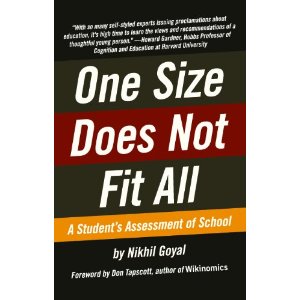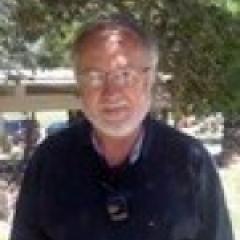One Size Does Not Fit All: A High School Student’s Assessment of School
Latest Story
On August 4, 2011, Nikhil Goyal, a sophomore at Syosset High School in Long Island, New York wrote and asked me answer some interview questions for a book he was writing about “transforming our 19th Century industrial model of education into a 21st Century model grounded in creativity, imagination, and project-based learning.
I had no idea what the interview questions would be, or indeed who was Nikhil Goyal. I told Nikhil I would be pleased to answer his questions.
Three days later I received nine interview questions from Nikhil. After reading them, I thought I was taking a “final exam” in modern American science education. He asked me these questions. You can read my answers here.
- How has the advent of No Child Left Behind affected science education?
- Currently, there’s a lot of talk of teaching the “building blocks” of engineering to elementary school kids. What are your thoughts on this?
- How can the traditional high school science curriculum (9th grade: Biology, 10th Grade: Chemistry, 11th Grade: Physics) be reformed?
- What course/courses should a student take if he/she is not entering a science-related path? And what types of skills are essential?
- I was reading on your website about possible science assessments. What have you noticed about the success of portfolios in evaluating students?
- How can we carry out a project based learning style of science on a grand scale?
- How can we make learning science fun for students?
- Why is inquiry-based learning fundamental to any science curriculum?
- In a post, you argue that the inquiry science teaching cannot flourish with common standards. What is an alternative solution?
Nikhil interviewed many educators and policy makers including Howard Gardner, Seth Godin, Dan Pink, Noam Chomsky, Diane Ravitch, and Frank Bruni.

A year later, Nikhil sent a galley of his book One Size Does Not Fit All: A Student’s Assessment of School, and asked for a blurb about the book. His book has been published, and you can link to it here. That’s what this blog post is all about.
The narrative of this book is rich with anecdotes of Nikhil’s experiences as an American public school student. These experiences are woven into his analysis of schooling, which is backed up with research and interviews with educational researchers. (Disclaimer: I was interviewed by Nikhil and one quote from my interview does appear in his book).
Nikhil wants schools to change. He wants schools to be places that support curiosity, imagination, invention and creativity. In one chapter of his book, he starts off by saying this:
I don’t want my brain to be stuffed with pointless content. I want to be taught how to create and do things. In conversations on changing the curriculum, the word “rigor” is often brought up. In one definition, rigor mortis is one of the recognizable signs of death. In education, rigor is a buzz word. Very few people know what it means. To some, rigor means more homework and stronger standards. That’s flawed. Rigor is about doing work that matters and has relevance to the world and focusing on depth over breadth. The late education reformer Ted Sizer once offered a threefold slogan for a revolution in teaching: “Less is more.”
In the end, Goyal wants school to create students who are life-long learners. He wants schooling to be community and apprentice-based, and one in which students become “captains” of their learning.
Goyal wonders:
- What if school wasn’t school anymore?
- How can we tailor education to every single child?
- Why is the testing regime dangerous and inappropriate?
- How can creativity be taught?
- How can we reinvent the teaching profession?
- What if students’ voices were heard and seen as human beings, not numbers in a spreadsheet?
Goyal’s voice is one that should be heard. What students think about their experience in school is important if we are to make changes in way we educate youth. Teenagers are not experts on learning theory, curriculum development, or the education of teachers. They are our clients, and we should be open to their ideas and feelings, and to their hopes and desires.
The next step for him is to experiment and engage others–students, teachers, community–in working out schooling based on his ideas.
About Nikhil Goyal
At age 17, Nikhil Goyal is the author of One Size Does Not Fit All: A Student’s Assessment of School published in September 2012 by Alternative Education Resource Organization. His pieces have appeared in the New York Times, Wall Street Journal, Washington Post, NBC, GOOD, and Huffington Post. He has also contributed three Letters to the Editors for the New York Times. Nikhil has appeared on Fox and Friends and Fox Business Network: Varney & Co. as well. Nikhil has spoken to thousands at conferences and TEDx events around the world from Qatar to Spain. He has also guest lectured at Baruch College in New York. A senior at Syosset High School, Nikhil lives with his family in Woodbury, New York.
This blog post has been shared by permission from the author.
Readers wishing to comment on the content are encouraged to do so via the link to the original post.
Find the original post here:
The views expressed by the blogger are not necessarily those of NEPC.
